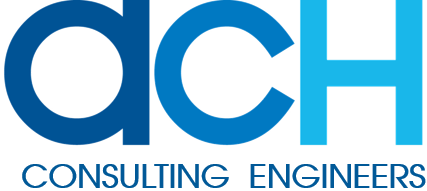HALF MOON BAY MARINA
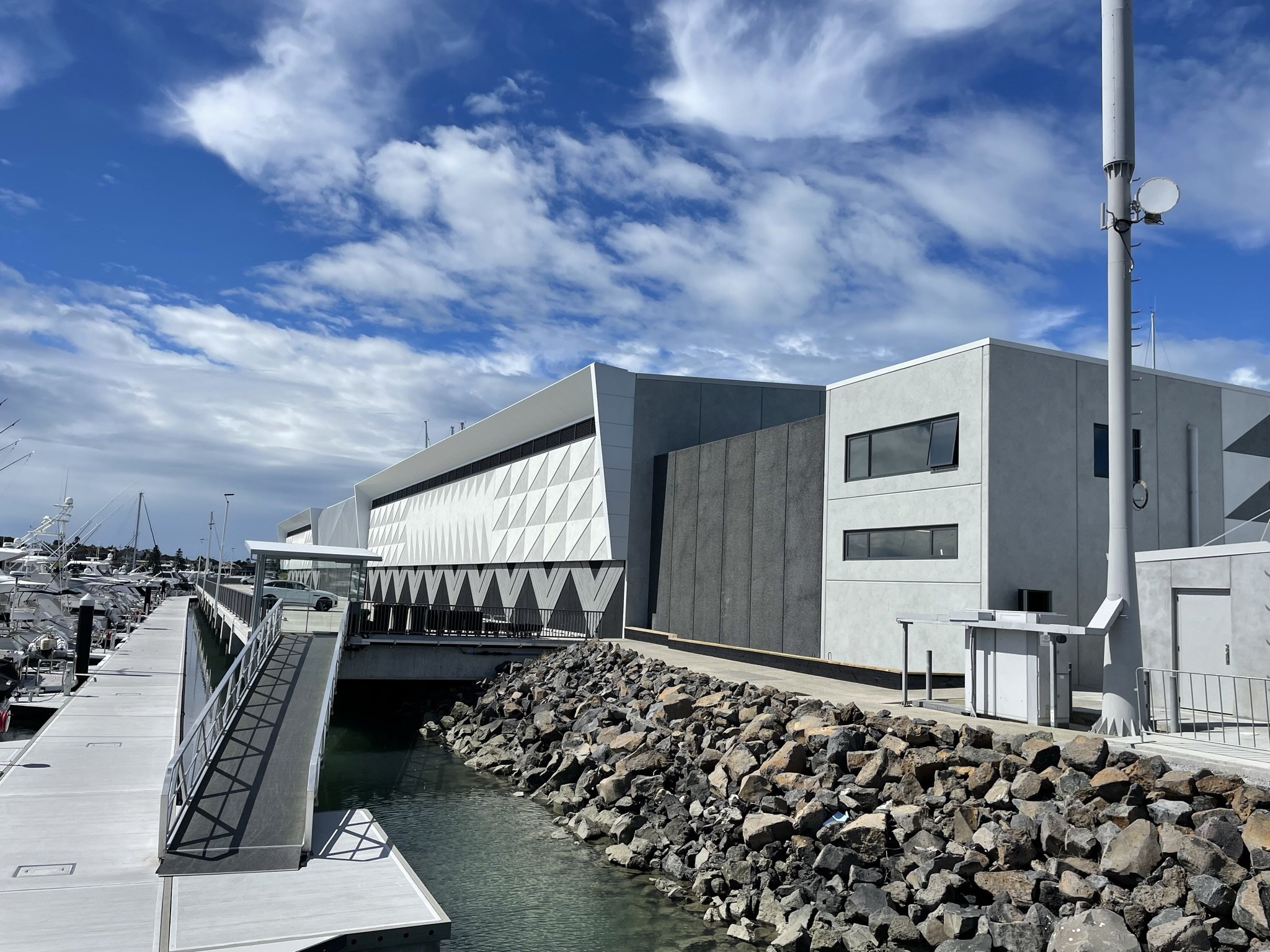
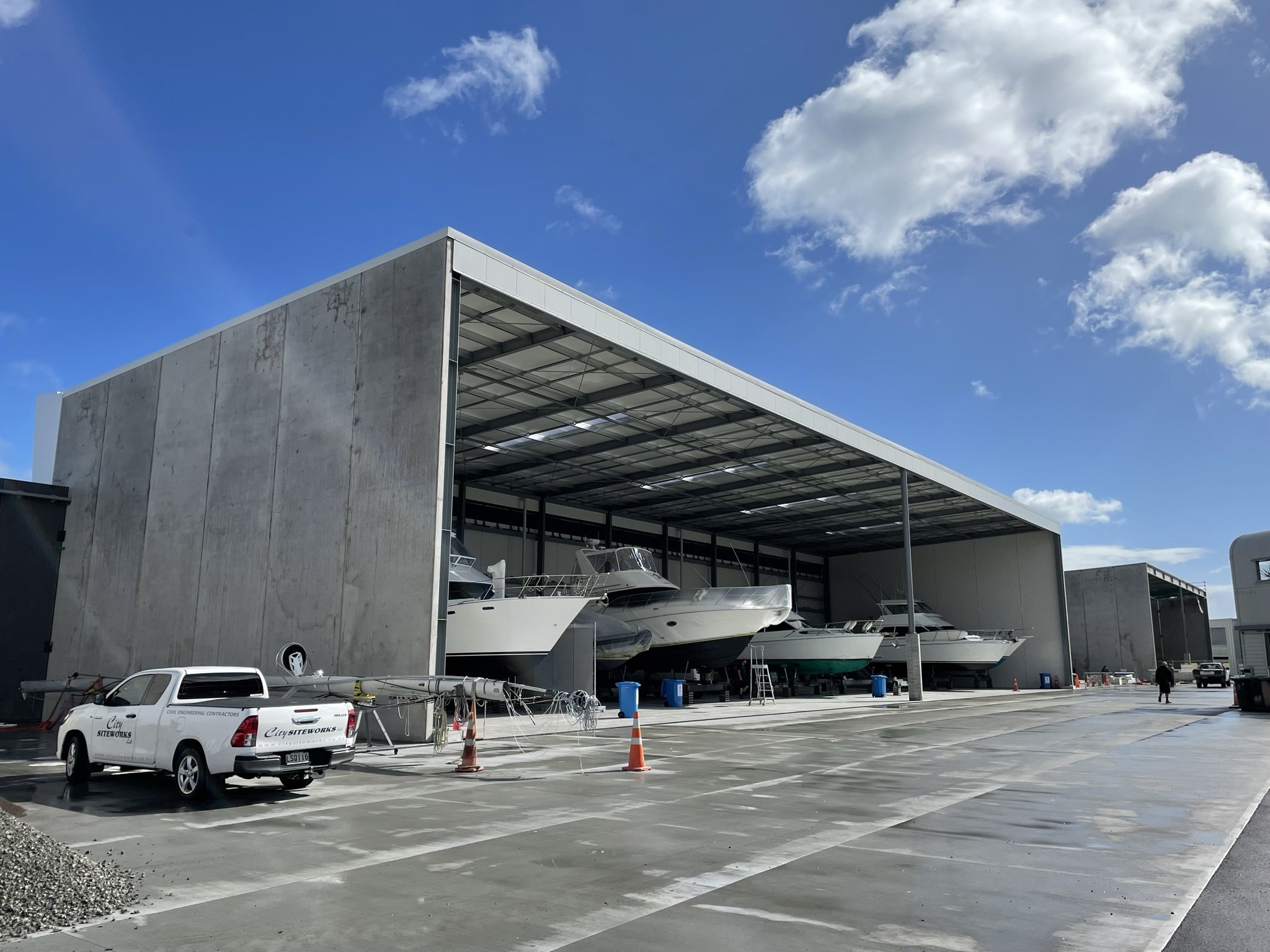
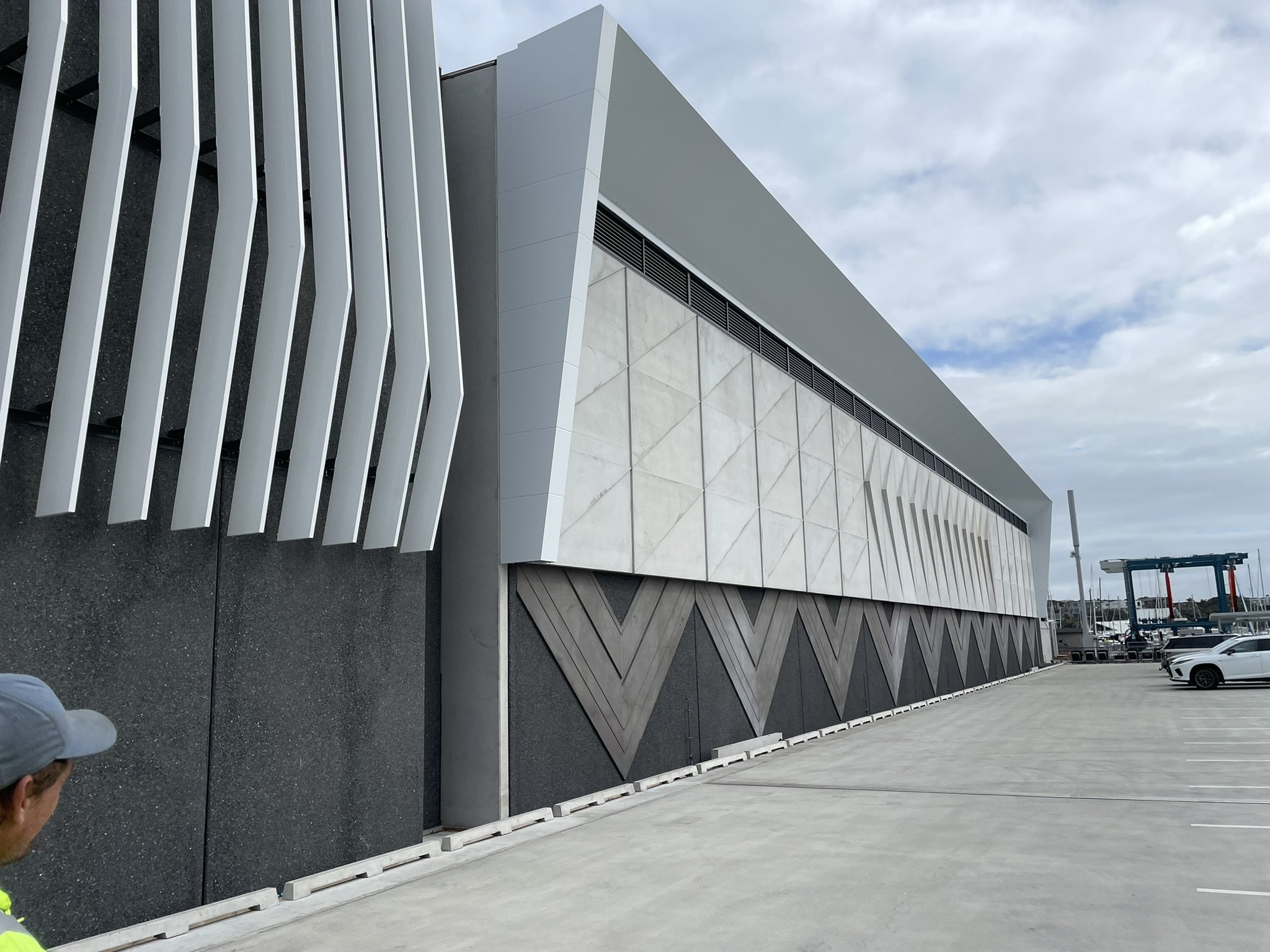


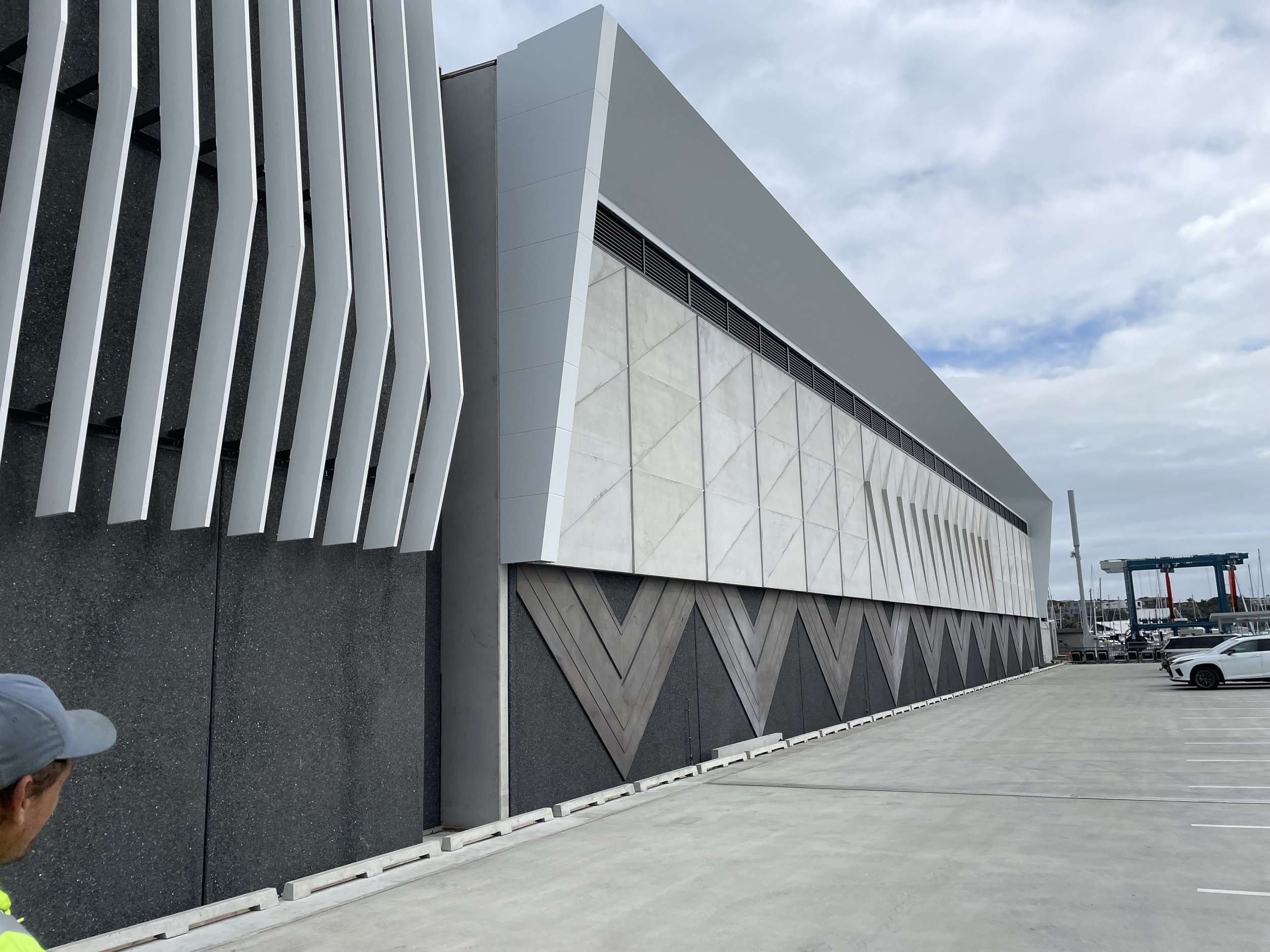
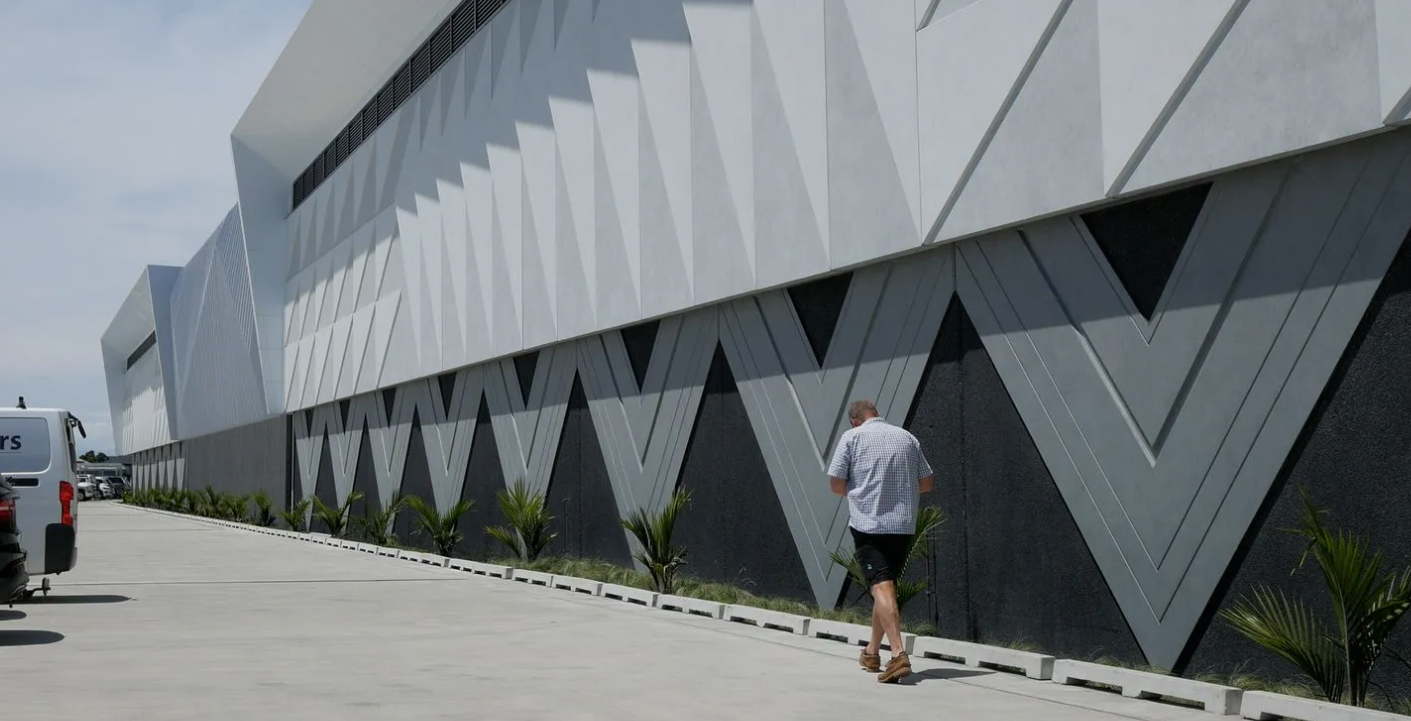
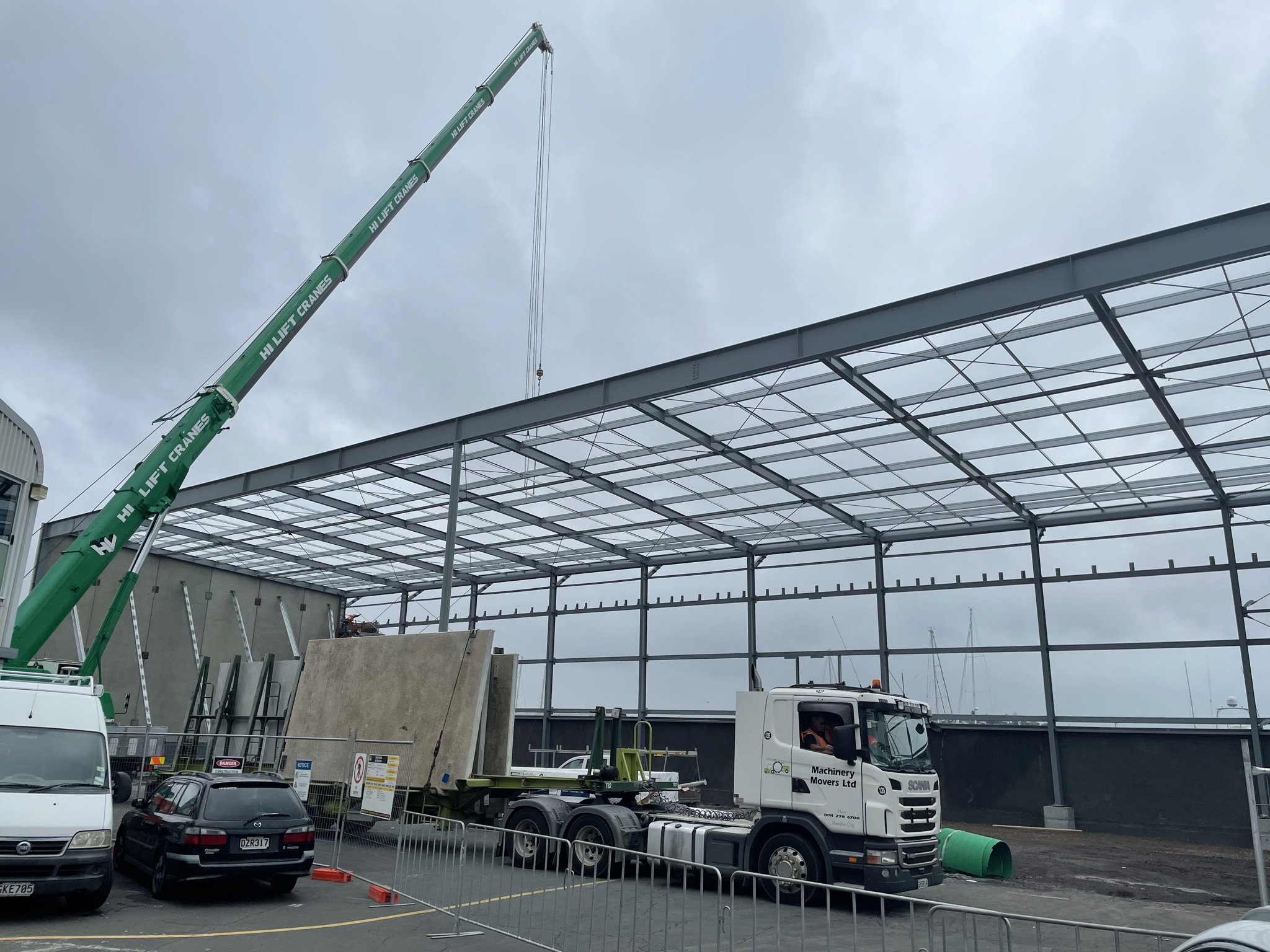
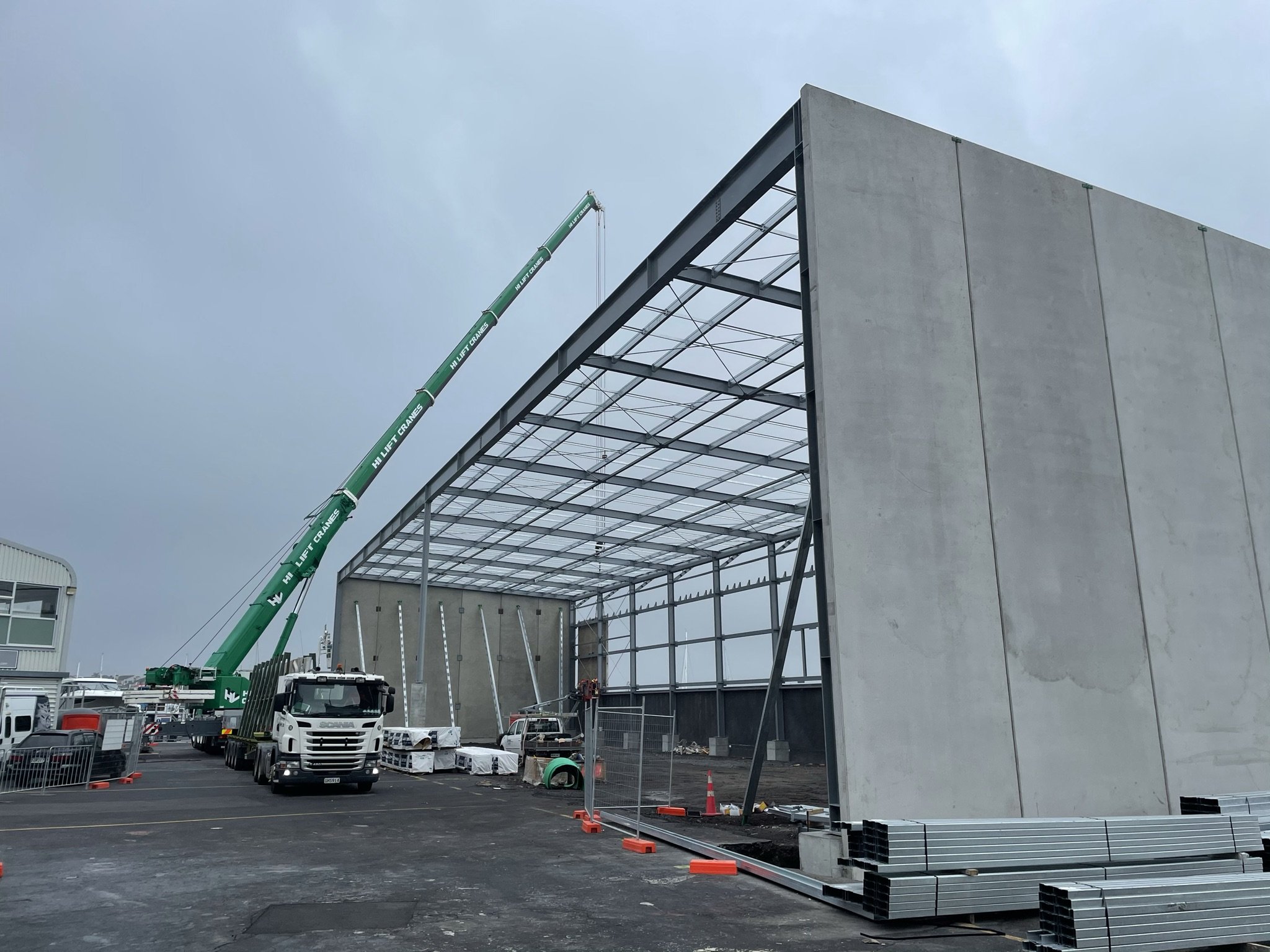
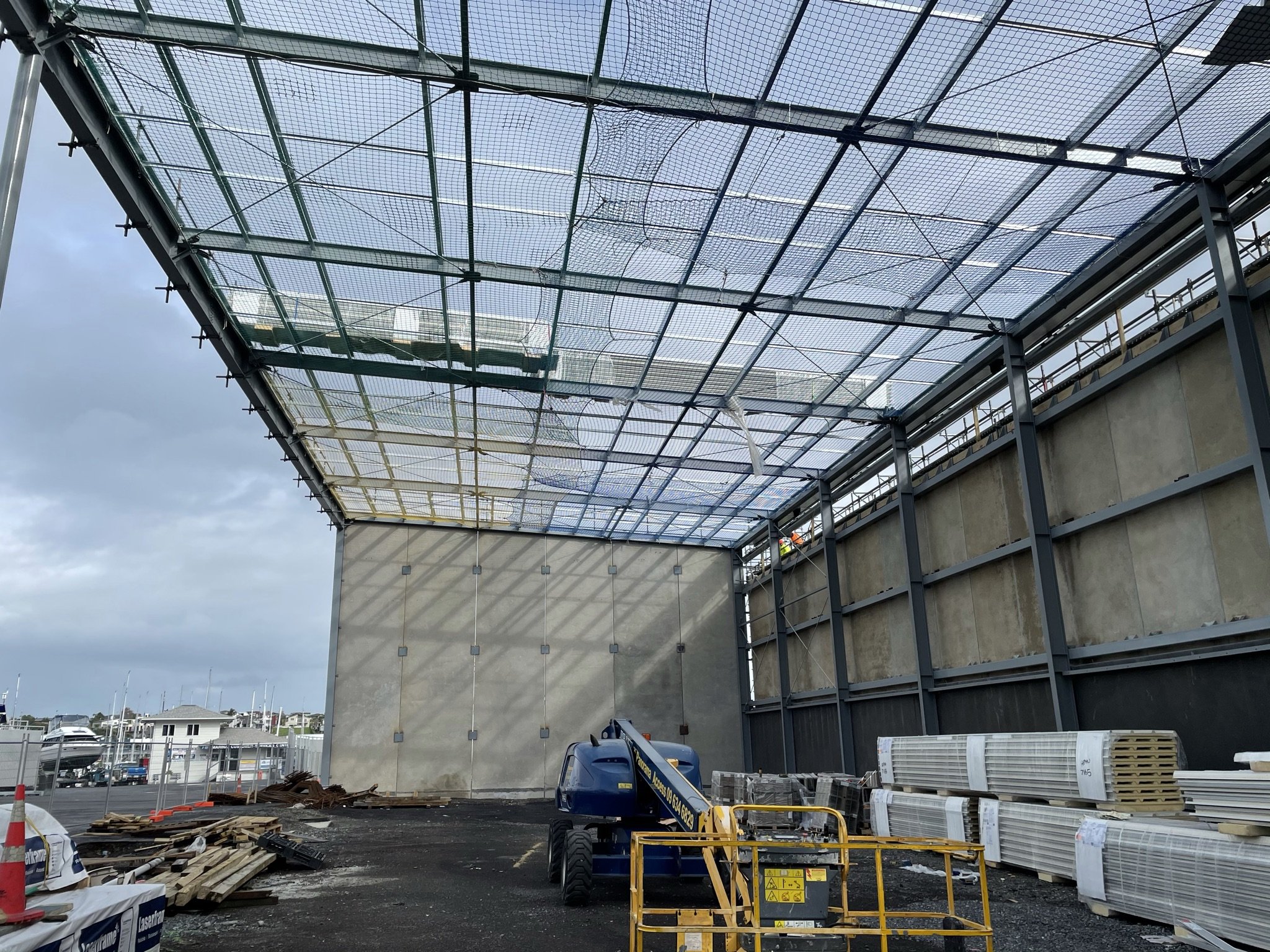
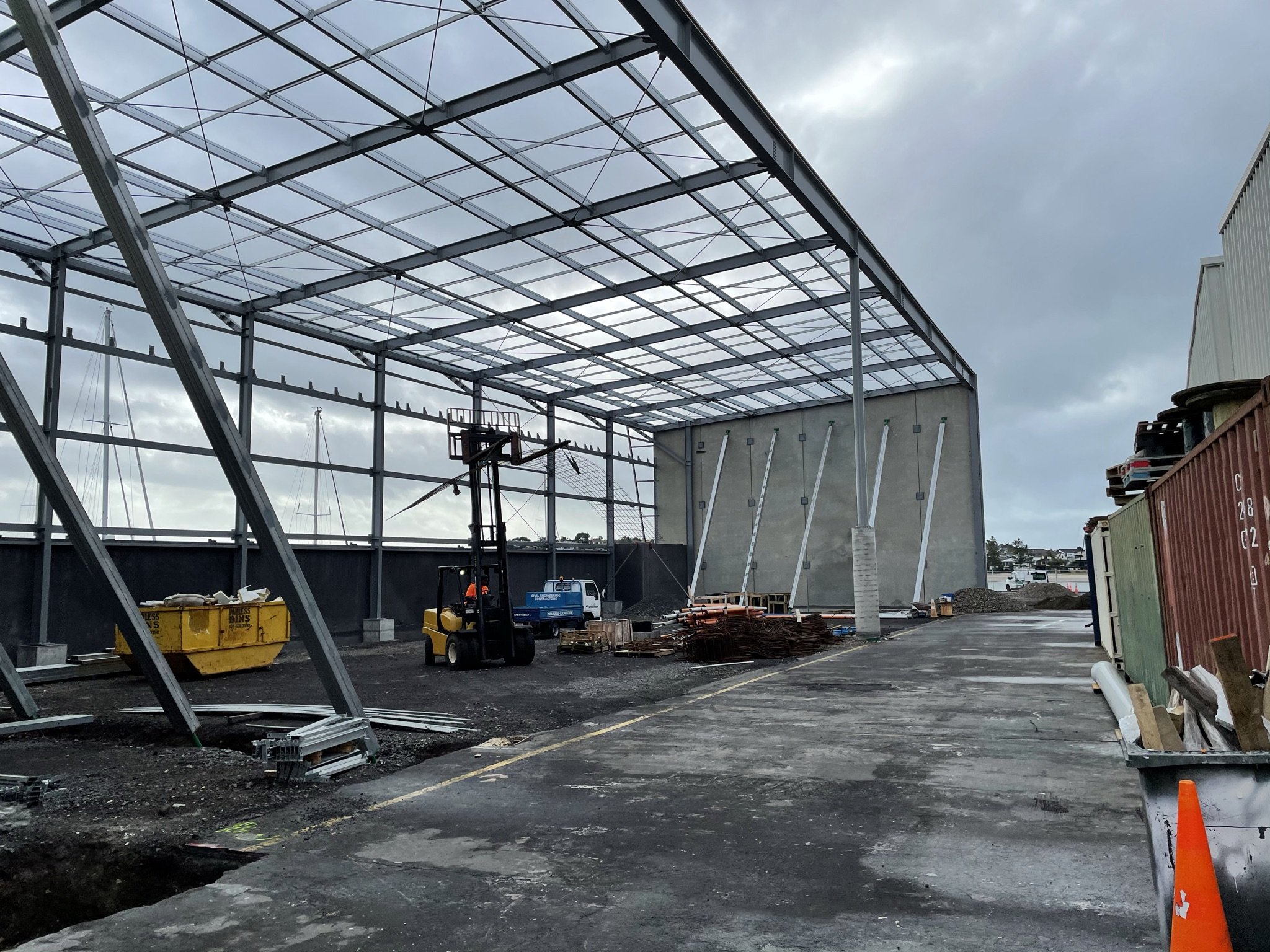



robust treatment ensurES the health of the marina industry and coastal ecosystems
The new boat sheds and workshop at Half Moon Bay Marina’s North Pier provided a unique opportunity to showcase seemingly utilitarian structures with great architecture. Situated on the water front of Half Moon Bay Marina, the clients brief was to create boat sheds that maximised undercover space within the planning and site constraints, and to improve impacts on the surrounding environment.
ACH Consulting provided structural and civil design, detailing and drawings to meet the complex requirements of the development. The structural design presented many challenges including large beam spans of up to 30 metres, durability, reclaimed ground and large point loads from the 85 tonne marine travelift. Custom welded beam sections (800mm deep) were used to maximise the openings in the sheds creating more room for boats. A variety of materials were used including pre-cast concrete, steel, litecrete panels, and aluminium louvres to create an efficient structure with plenty of aesthetic flare. Durability of materials and coatings were carefully considered to meet the durability requirements of the water front site.
From a civil engineering perspective Marinas in general provide dynamic challenges for stormwater treatment. Marina anti-fouling paint is loaded with copper and the sacrificial anodes are made of zinc. Both zinc and copper are detrimental to the marine environment. Both metals reduce fecundity and increase mortality of marine invertebrates and vertebrates. On top of that marinas store fuel and a busy marina can have numerous traffic movements throughout the day becoming a source of Patrolium Aromatic Hydrocarbons for the receiving environment.
Half Moon Bay Marina is a 13 ha, 500 berth full service marina located near the mouth of the Tamaki River Estuary. Stormwater from the 2 ha hardstand area of the boat maintenance / repair yard discharges to the Tamaki River Estuary. Prior to redevelopment the analytical results of the stormwater discharges showed them to exceed the ANZECC 2000 Guidelines for Aquatic Ecosystems discharge criteria particularly for zinc and copper.
The redevelopment of the maintenance and repair yard included the removal of the existing open front boat maintenance shed and the subsequent construction of two larger open front buildings as well as a partial roofed maintenance are and a 2400 m2 parking deck extending over the tidal marine area. As part of the redevelopment the marina operator sought to treat the stormwater discharge so that it would meet the ANZECC 2000 Guidelines for Aquatic Ecosystems discharge criteria and have less detrimental effects on the receiving environment.
Separating the stormwater from the washdown water was the first step in improving the situation. A new tradesmen system was designed to manage water used in the boat wash bay and maintenance bays. Interceptor drains were installed to ensure stormwater runoff would not enter the new maintenance and wash down sheds. Fox valves were fitted to both the open air maintenance area and the boat wash down to ensure first flush runoff would enter the dedicated trade waste treatment system.
Stormwater runoff from the hardstand areas in front of the maintenance sheds is now treated with a proprietary system. Stormwater runoff from the new parking and manoeuvring areas is treated using a combination of WSD elements. Analytical results show the treated stormwater runoff from these redeveloped areas now meets the ANZECC 2000 Guidelines for Aquatic Ecosystems discharge criteria. Results from trade waste system show the levels of zinc and copper are now well below the Watercare Limits for trade waste.
Marinas are important to the New Zealand Economy as is the coastal marine area. Being able to provide robust treatment for the stormwater runoff and seperating the water streams is an important factor in ensuring the health of both the marina industry and the coastal ecosystems.


